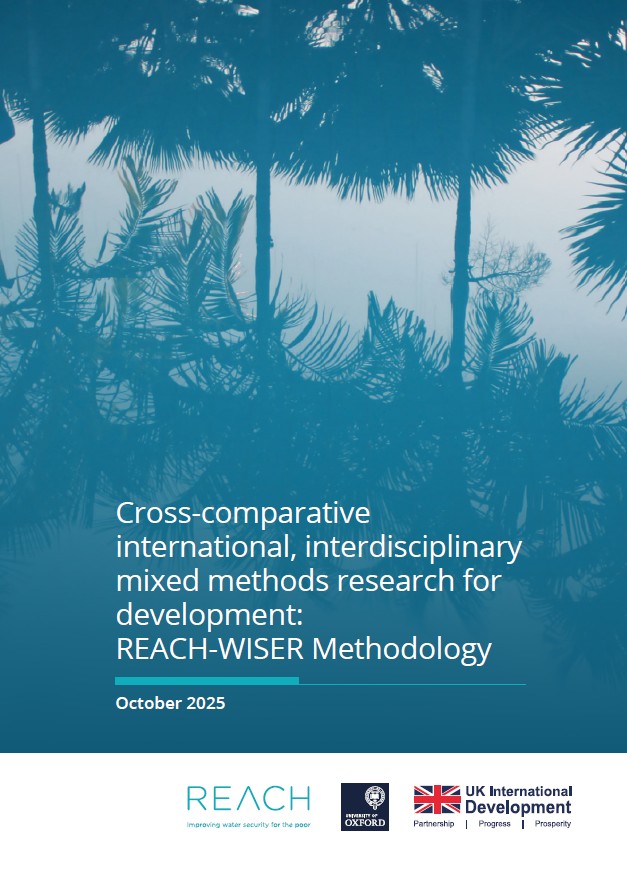Katrina Charles, Sonia Hoque, Marina Korzenevica, Jemal Adem, Khonker Taskin Anmol, Elijah Bisung, Alexandra Brewis, Salome Bukachi, Cheruiyot Buses, Sarah Dickin, Cheryl Doss, Gin Dupont, Ellen Dyer, Daniel Esukuku Ekai, Engdasew Feleke, Catherine Grasham, Marya Hillesland, Fahreen Hossain, Md Rajibul Islam, Md Mahfuzul Islam, Wendy Jepson, Mercy Musyoka, Saskia Nowicki, Sara Nowreen, Daniel Ochieng Omia, Dennis Ongech, Justin Stoler & Tassew Woldenanna (2025).
The ways in which women, men and children experience and influence water security is shaped by their roles and status in their household and community. Across the REACH programme, we have explored water security for vulnerable people, using a risk-based framework to consider the different types of water security outcomes, how water security risks are distributed in society, and how these inequalities are reproduced. WISER – Water InSecurity, Equity and Resilience – was a research collaboration that was designed to consider how risks were distributed down to an individual level, considering intrahousehold dynamics as well as community. Previous research had identified inequalities in intrahousehold decision-making, with examples of these limiting the success of water security interventions.
The research was designed around four central tenets. A cross-comparative approach across countries and the urban-rural gradient supported analysis of the influence of cultural, political and geographic contextual factors, facilitating wider policy relevance. Longitudinal research with repeated engagements across seasons reflected the temporality in water security, grounding the work in an understanding of local climate. Intrahousehold dynamics were at the core of the work, with design ensuring gendered dynamics between spouses were captured. Mixed methods enabled capture of data across scale and depth, and across different times scales.
The three observatory locations, and the water security challenges faced, included: flooding and salinity of drinking water in coastal Bangladesh; industrial growth in agricultural areas near Addis Ababa in Ethiopia; and water scarcity in Turkana County in northwest Kenya.
This paper presents the integrated methodology across these sites and methods. It has been developed to share the design and nuances of methodologies beyond that which can be covered in individual journal papers, including some of the rich methodological discussions held by the authors.

